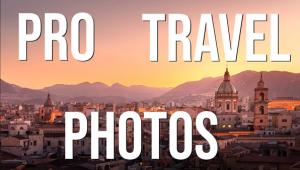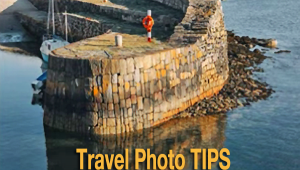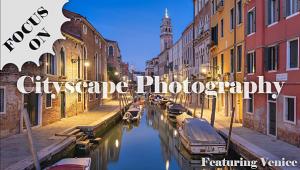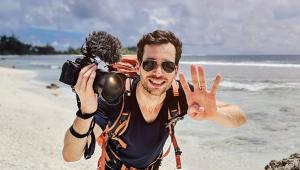Point & Shoot: Photographing Cities
|
Cities offer a great diversity of photo opportunities, like architecture, historic landmarks, interesting people, and parks—new subjects can appear around every street corner. It's fun to photograph icons that represent the flavor of the urban spot you're visiting, whether it's chili peppers in Santa Fe, New Mexico, the cable cars in San Francisco, or the glitzy lights on the Las Vegas strip.
Whatever your urban photo destination, it's best to travel light with your photo equipment. A point-and-shoot camera is ideal because it makes it easier for you to concentrate on composing pictures and to respond quickly to photo opportunities. If your compact camera is equipped with a zoom lens, this will allow you to capture wide views and still let you zoom in on interesting faces or architectural details. To become acquainted with a city, begin by taking a brief bus or walking tour. This way, you can easily learn what the city's "personality" is like, and scout some potentially good photo locations for later on. However, if you only have one day to visit a city you want to photograph, you'll need to scout around and be prepared to take pictures on the spot. Because cities evolve throughout the years, you may find parts of town with old and new sections right next door to one another. Look for scenes that accentuate that contrast, like a historic hotel next to a modern glass and steel office building. In San Francisco, the oft-photographed "postcard row" of six Victorian Houses facing Alamo Square contrasts sharply with the modern skyline in the background. City vistas offer some of the most striking photo opportunities. From a high vantage point, you can view patterns in the rows of buildings that aren't visible at street level. To photograph city vistas from above, find an observation deck that offers good overviews, or try an upper floor at a hotel or another public building. Surrounding hills and bridges can also give you great viewpoints. When photographing skylines, avoid the harsh light of midday if possible. More dramatic picture opportunities present themselves at dusk, when buildings and streetlights glimmer against a colorful sunset sky. If you're shooting during low-light conditions like this, use a fast film like ISO 400 to 1000, so you can hand-hold your camera. In the morning or afternoon, ISO 100 film is fine. And now that you've shot some wide, expansive views, take the time to zoom in and isolate some interesting architectural details. If you don't have a zoom lens, simply move in close. Find out what your camera's minimum focusing distance is so that your close-ups won't be blurry. Compose your pictures tightly and fill the frame with your subject(s). One isolated detail shot from afar won't have nearly as much impact. Look for interesting abstracts within your composition—sometimes you can find patterns within repeating details. Lighting is very important when photographing small details. Sidelighting can be very dramatic, as it accentuates the three-dimensional form of your subjects. If color is an important part of the composition, the soft, diffuse light of a hazy day will give you the most saturated tones. So grab your camera on your next business trip or vacation, and enjoy an urban photo shoot. You'll be amazed at just how much cities have to offer in the way of great picture-taking opportunities. |
- Log in or register to post comments






















































